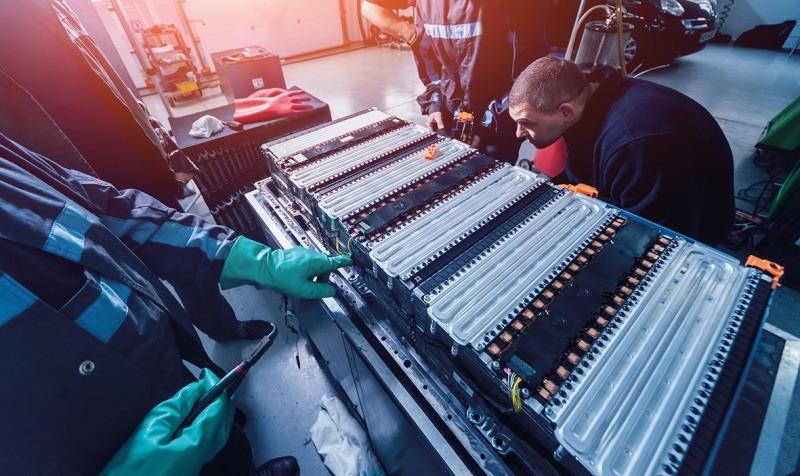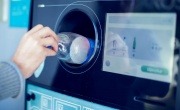Ion the prize: How to recycle lithium-ion batteries
Lithium battery use is on the rise, thanks to the ubiquity of mobile phones and laptops, but does the UK have the capacity to deal with these power sources once they reach end of life?
They are essential to fast-moving 21st-century life, but battery recycling in the UK has, for many years, dawdled in the slow lane, hampered by a lack of domestic reprocessing facilities and the high cost of recycling. However, whilst things have undoubtedly improved since the adoption of the Batteries Directive in 2009, there is a growing concern about one variety in particular: lithium ion. These can be found in the mobile phones and laptops nearly all of us own; if you’re an early adopter of the electric car, you’ll know all about the halftonne pack that has to be charged every evening. In short, their numbers are growing and it’s not clear the UK has the capacity to deal with them.
Accurate information about the scale of the problem is hard to come by. The UK reporting system only classifies batteries in three main types – lead acid, nickel cadmium and the umbrella category ‘other, meaning data on lithium ion alone is scarce. We do know, however, that in Europe, lithium as a percentage of total reported portable battery takeback has increased from one per cent to six per cent in the last decade. It seems reasonable to assume that the UK’s figure is not radically different.
Whilst not presenting the environmental problems associated with lead acid, lithium ion batteries do pose a fire risk as the element heats up when it is exposed to water. Indeed, lithium batteries were supposedly the cause of an air crash in Dubai in 2010. For this reason there are tight regulations over their transportation, unless they are already in the products they power. Consignments of the batteries themselves are banned from UK aircraft.
They are covered by a producer responsibility system, the Battery Directive, set up in the last decade. As part of this, suppliers that sell over 32 kilogrammes per year are required to take them back from consumers free of charge. As a result, mixed battery collection points are now a feature of most large stores and municipal recycling sites. A target has been set for 50 per cent of collected ‘other’ batteries to be recycled, though, of course, it is unclear how well lithium is doing within that general category.
This is a concern to many in the industry, such as John Redmayne, Managing Director of the WEEE compliance scheme ERP, who said: “If the average percentage of lithium batteries by weight within the total collection starts to exceed certain limits then the packaging and shipment of the whole set of batteries would need to be changed. That would require additional packaging and transport requirements, which will all add to the cost. This is something our suppliers are already starting to highlight to us.”

After collection batteries go to be separated. At larger suppliers this is done via automated optical sorters, whilst smaller operators still use manual sorting. After this the lithium ion batteries go to the nearest reprocessing plant, in Belgium. There are no recycling facilities for lithium ion in the UK.
The Belgian plant is the largest of its kind in Europe and there the batteries go through one of two recycling processes. One is a hydrometallurgical system, where, via a ‘leaching’ process, the cobalt (the valuable part of the battery) and other metals such as copper are extracted and recovered.
The other is a ‘pyrometallurgical’ process: “You have a furnace where you put the batteries in to be melted,” explains Andreas Bohnhoff, ERP’s Head of Global Takeback. “The material is heated to recover the cobalt from the alloy. After that you are left with the slag – normally all lithium or organic components and these can be used as construction materials.”
Recycled lithium is still up to five times more expensive than virgin material, making recycling an unattractive prospect. And, with the cost of exporting the batteries to Belgium certain to rise post-Brexit, the prospect of a market developing for recycled lithium is not likely in the short term. John Redmayne sees one way of solving the problem: “I think there is a lot of interest in looking beyond lithium. I don’t think it’s going to be phased out overnight, but a lot of research and development is going into looking at future chemistries that are easier to recycle and don’t pose a safety risk.” The Faraday Battery Challenge, which is part of the Industrial Strategy Challenge Fund, is partially an attempt to address this. The government has earmarked £246 million to fund this project, which aims to develop new battery technologies.
But there are also a clutch of other projects that are seeking to address the lithium battery issue. LI-Cycle is a Canadian firm which is apparently planning to pioneer a process to recycle the batteries through so-called ‘wet technology’. Meanwhile, Aceleron is a London-based project that collects used lithium batteries, tests them and then re-packages them. “We reduce our customers’ recycling budgets by identifying what of their battery stock is actually useful and can be repurposed,” explains founder Amrit Chandan. “We also have a hardware platform that allows us to package batteries into repairable battery packs.”
Aceleron take vehicle, laptop and power tool batteries, though not mobile phone batteries. Their success rate is impressive – according to Chandan, around 70 per cent of the batteries they take in can be repurposed in other applications, such as home energy storage. Already they have over 10,000 coming through their doors each year.
“At some point we need better recycling technology,” admits Chandan, “but until then we need to extract as much value out of them as possible, which means using them as many times and in as many different applications as we can.”
 This article was taken from Issue 92
This article was taken from Issue 92Also worth mentioning is Geesinknorba, the Dutch manufacturer that in 2015 launched the UK’s first lithium ion-run electric bin lorry, the LI-ON Power Pro. The batteries have a lifespan of between seven to ten years, longer than the lorry itself. “They are far smaller, more compact and lighter than vehicles using lead acid batteries,” a Geesinknorba spokesman said. “Thinking about bin lorries and their payload in terms of tonnage, all of those are crucial elements of an economic operation.”
The Power Pro tends to be used around urban areas where there is less driving involved and Geesinknorba sees contractors potentially being able to work longer hours because of their reduced noise it affords. “You can then reduce the number of vehicles in your fleet because they are working longer hours. This means less capital outlay for local authorities and contractors, which in this climate is very attractive.”
But perhaps the emergence of electric vehicles – globally, numbers are predicted to pass the 140 million mark by 2030 – only serves to highlight the need to get on top of lithium ion recycling. “If the climate change targets are met,” says Chandan, “and there is no reason to doubt that – there are going to be a hell of a lot of batteries coming onto the market that will be waste at some point.
“And you can’t forget that this is a finite resource. At current mining rates there is only around 350 years worth of lithium left in the world. We don’t want to be creating a new fossil fuel situation where we are running out of material and we’re not recycling it.”




